Tradeshow Lessons from the Mall
It seems like every time my wife and I go shopping at the mall, I get a reminder of what it takes to make exhibiting at a tradeshow a great investment. I think we have all had the same experience – I’m not talking about the big department stores or even the smaller shops that take up most of the space at the mall. I’m referring to the little carts that sit out in the open.
Most of these tiny stores (or kiosks) are staffed by one young person who spends most of their time talking on their cell phone, texting or chatting with friends who stop by. Just like most companies that exhibit at tradeshows, these small businesses are depending on the visual appeal of their products to attract potential customers. While I have no firsthand knowledge of how profitable these carts are, I think it’s safe to say their owners would be thrilled if they could increase sales by 10 – 20% each day.
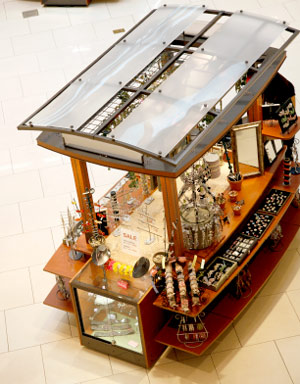 The exception to the rule are the carts that are selling jewelry or eyeglass cleaner. As you walk by, you will almost always be approached by someone who asks, “Excuse me, ma’am, would you allow me to clean your rings?” or “Excuse me, sir, can I clean your eyeglasses for you?.” I would venture to say that the people that work these carts have been given some training and some incentive. Not only that, I’ll bet that they sell much more of their product than the carts staffed by distracted teens.
The exception to the rule are the carts that are selling jewelry or eyeglass cleaner. As you walk by, you will almost always be approached by someone who asks, “Excuse me, ma’am, would you allow me to clean your rings?” or “Excuse me, sir, can I clean your eyeglasses for you?.” I would venture to say that the people that work these carts have been given some training and some incentive. Not only that, I’ll bet that they sell much more of their product than the carts staffed by distracted teens.
My personal favorite is the one demonstrating and selling the foam airplanes that come right back to you when you throw them. Usually, two young people are constantly throwing the planes and they always come right back to them. Just the activity alone makes you stand there and watch, which greatly increases the chances you’ll buy something.
So how does all of this relate to trade shows?
Even though the situations are completely different, there is one common factor. The buyers in each case are human beings. Most human beings respond to similar stimulus. Get the people that work your exhibit to approach prospects with as much energy as the people selling jewelry cleaner. Have some activity in your booth like the people throwing foam airplanes. I’ll bet you’ll see a big improvement in your trade show ROI.
Trade Show, Show Business: Put the “Show” Into Your Exhibit
When you are putting together a tradeshow exhibit, think about it as theater. You need to attract an audience, capture their imagination, and leave a memorable impression. To do that you need to set the stage and build an atmosphere that will draw people into your booth – bring them into your show.
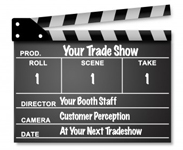 You need a great script and the best actors you can find
You need a great script and the best actors you can find
If you want great reviews, then you need to start with a great script. Then you need “actors” who can bring that script to life and who can improvise. Give them the perfect costumes and a stage setting that builds on your brand story, and your exhibit will draw prospects right into your show.
Don’t be afraid to be dramatic!
Some of the most imaginative, most successful trade show exhibits are done by companies who offer intrinsically boring products and services. They do not have the luxury of relying on people being interested in what they are selling, so they often work much harder to add entertainment value to their exhibit. These are some of the booths with the most creative themes and visual drama.
Go a bit outside the box, push the boundaries. Trade show attendees want to see something new and exciting. Just remember to stay consistent with your brand position and brand values.
Lights, camera, action
Well, OK – lights and action! One way to create visual interest is with your lighting design. Work with your designer to build a lighting concept that presents your ideas in a clear way to focus on your company’s competitive advantages. Take it to the next level by using lighting to do more than spotlight your product, use it to create a spotlighted stage for your booth team.
Make your show a tough act to follow
If you create a real show, your exhibit will be the one that people remember when they walk into your competitors’ booth and when they return to their day-to-day business after the show. It will be the one that they talk to their co-workers and associates about. And, perhaps best of all, it will be one of the exhibits that gets press extending your trade show marketing reach.
Trade Show Exhibit Design: “Think outside the box”
I have a friend who always seems to come up with a new, successful angle for every trade show. Recently, I asked her, “How do you do it?” The simple reply, “I always force myself and my team to think outside the box. I challenge everyone involved to do the unexpected and come up with new ways to attract attention and create excitement.”
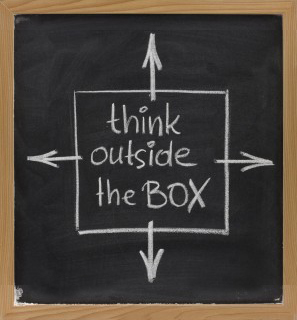 I thought about this advice for a moment. It rattled around in my head. At first, I thought, “I always think outside the box.” Then I started to really evaluate what this common expression means. It is an appealing concept, but is it the right approach for every company, for every brand? And did I really always “think outside the box”? Yes, or at least my goal is always to come up with new ideas and “out of the box” solutions. I just never used that expression to describe my efforts.
I thought about this advice for a moment. It rattled around in my head. At first, I thought, “I always think outside the box.” Then I started to really evaluate what this common expression means. It is an appealing concept, but is it the right approach for every company, for every brand? And did I really always “think outside the box”? Yes, or at least my goal is always to come up with new ideas and “out of the box” solutions. I just never used that expression to describe my efforts.
What is the “box”?
The trade show’s “box” can be big or small. It can have lighting and dramatic banners. It is the expected trade show exhibit, staffed by smiling people representing a company trying to get leads, offering a free gift or a few samples or some sales material. The box is ordinary, stamped out, one after another just the same in different colors. The box is forgettable.
“Outside the box” exhibits
These are the exhibits that give an attendee a new perspective. These are the exhibits that make lasting impressions on the people who see them. To be effective they require more than just being novel, creative ideas; they need to be thoughtful and suitable for the target audience and the brand. Very few trade show exhibits truly rise to this challenge.
Should every company strive to do the unexpected?
As long as the exhibit is consistent with the brand position and brand values, and successfully promotes your products or services, the answer is, “Yes!” It is a real trick to balance inspiring creative with the hard-hitting sales message that this tough economy demands, but when you achieve it, the results can be stunning.
How to get “outside the box” ideas
The first step in creating a breakthrough exhibit is to build a team that shares that commitment. Once you have assembled that team, make sure that they consistently focus on really solving the marketing challenge that faces you in new and interesting ways.
Your trade show exhibit is like a billboard
There are a lot of similarities between a trade show exhibit and outdoor advertising. You are located on a pathway and people are racing by. They glance to the left and to the right. They have a lot of other things to look at. You only have a few moments to attract their attention. 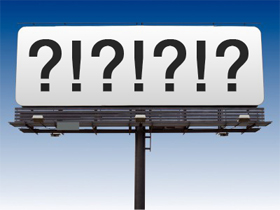 The challenge is very similar to designing a billboard to be placed on a busy Interstate highway.
The challenge is very similar to designing a billboard to be placed on a busy Interstate highway.
The best billboards evoke an emotional connection.
They are usually entertaining and often use humor. To be effective billboards must be short, sweet, simple and to the point. Not surprisingly, many of the “rules” for great outdoor advertising design translate to the trade show floor.
- Be relevant or your exhibit will be invisible. Make sure your ads appeal to your target market. Use colors, images and words that will attract them and draw prospects into your exhibit.
- Bright and bold colors are more effective. Bright colors work well, but limit your pallet to two or three at most. Exhibits with multiple bright colors are visually confusing and that reduces the overall effectiveness. Even if you are marketing natural and “green” products, consider using clean blue or bright white rather than the more expected green-brown palette. Green and brown are very likely to recede into the background and have little visual impact unless you compensate for the color palette with other design elements.
- Visibility matters. Make your major exhibit graphics large enough to be seen quickly and from a far distance.
- Use words sparingly and make them easy to read. Use large, legible type. The best bet is solid backgrounds with sharply contrasting type. And unless there is a compelling reason for vertical type, orient your type horizontally – it is easier to read.
- Choose graphics that connect with your target. Select images that will generate the strongest emotion related to your product or service.
Trade Show Exhibit Design: Motion Captures Attention
Few exhibitors use motion to draw visitors to their trade show exhibit, and this presents an opportunity for the exhibitors who do make effective use of motion. Impactful motion can be created in 2-D with digital video or interactive displays, or in 3-D with people or other moving objects.
Effective 2-D Motion Techniques
 Trade show floors are loaded with digital display monitors but they are rarely used to create motion. Most often they are used to show videos of products, digital slide shows or other programming that is meant to be watched from a few feet away. This can be an important element of a booth but may not draw someone into your booth.
Trade show floors are loaded with digital display monitors but they are rarely used to create motion. Most often they are used to show videos of products, digital slide shows or other programming that is meant to be watched from a few feet away. This can be an important element of a booth but may not draw someone into your booth.
To attract passersby place displays above head level and in a location that can be seen easily from at least 10 or 20 feet away. Using large display screens or an array of displays can help make a big statement.
If you want to attract people with something moving, the programming is what really matters. Program your display with attention-getting video or graphics. Use large graphic images, bright colors, stark contrast and incorporate motion.
Effective 3-D Motion Techniques
A few exhibitors have created trade show exhibits that incorporate the latest 3-D technology, but most 3-D motion elements used in trade show exhibits are people or objects that are in motion.
People are the most common 3-D motion elements. A product demonstration filled with activity and animated behavior attracts attention. A performer doing any kinetic activity – dancing, juggling, walking on stilts, and so on – can attract large crowds.
The other common 3-D motion elements are physical objects that move. A motion element can include banners, streamers or tension fabric structures that are well above eye level and in motion.
Effective Use of Motion
Motion elements are highly memorable and can leave a lasting impression with trade show attendees. The most effective way to incorporate motion techniques into a trade show booth is to make sure that the moving element reinforces the brand identity and the booth concept. As with every powerful communications tool, integration is essential to success and using motion elements as a gimmick just to attract attention without properly integrating the message can actually undermine your overall efforts.
Used wisely, motion can attract visitors to your trade show exhibit and has the capacity to build awareness and leave a lasting impression of your company and brand.
Putting the Show back into Trade Show Exhibits!
ExhibitorOnline published a case history about a trade show exhibit that brilliantly executed a complete 360 degree trade show exhibit. The exhibit was presented by PayLock LLC, a manufacturer of a self-release car-booting system called the SmartBoot at the International Parking Institute Conference & Expo (IPI) in Las Vegas.
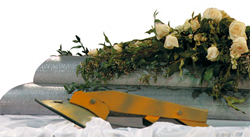 Since the company’s 2004 launch, PayLock’s president, Cory Marchasin, hoped to snuff out traditional car boots. “My partners and I acquired a car-boot company in 2004, but rather than continue with this traditional technology, we looked for ways to develop a competitive edge and differentiate ourselves from the competition,” Marchasin says. “As part of our creative process to build a better boot, we decided it wasn’t actually the product that needed refining so much as it was the business process itself. Traditional boots and the process associated with them just didn’t seem to make sense anymore.”
Since the company’s 2004 launch, PayLock’s president, Cory Marchasin, hoped to snuff out traditional car boots. “My partners and I acquired a car-boot company in 2004, but rather than continue with this traditional technology, we looked for ways to develop a competitive edge and differentiate ourselves from the competition,” Marchasin says. “As part of our creative process to build a better boot, we decided it wasn’t actually the product that needed refining so much as it was the business process itself. Traditional boots and the process associated with them just didn’t seem to make sense anymore.”
PayLock decided to bury competing products with a funeral-based booth theme. Their exhibit including everything from in-booth caskets to after-hours wakes, PayLock’s “morose strategy used dead-pan humor to rub out the competition — and slay its own expectations in the process.” Here are a few highlights:
- The entire trade show exhibit and program was infused with product messages and tongue-in-cheek tactics to keep the laughs coming.
- Pre-show promotion: An obituary for the traditional boot ran in the show directory, available starting the day before the show opened.
- Two memory boards with images of the traditional boot and the paper permit paid homage to the Smart-Boot’s “deceased” competitors.
- Following the show’s ribbon-cutting ceremony, PayLock pallbearers hoisted the coffins onto their shoulders and led a processional to PayLock’s booth. A five-piece jazz band accompanied the processional, recreating a New Orleans-style funeral march.
- The two coffins were positioned near the back of the exhibit. Monitors above the coffins displayed the time of the next funeral presentation along with whimsical images during the eulogies.
- Tissue boxes, black carpet, and casket sprays adorned the surreal 16-seat in-booth funeral parlor.
- PayLock staffers read the eulogy, which explained the traditional boot’s fate through excerpts from the traditional boot’s journal. Attendees that read pre-scripted eulogies of their own were entered into a drawing for an iPad.
- After the funeral, the bereaved filed past the caskets to pay their respects and collect free T-shirts.
The exhibit was not a hit with competitors, but was very popular with show attendees, and, most importantly, generated a lot of qualified sales leads. The most impressive aspect of this exhibit was how it seamlessly integrated the company’s sales message into an unlikely and memorable branded event.
You can read the entire case history at ExhibitorOnline.com, click here!
Trade Show Exhibit Strategies: Be the “Talk of the Show”
Become the “Talk of the Trade Show”
Every show has that one exhibitor that everyone talks about – the “Talk of the Show”. It is not always the biggest or most expensive booth, but it is often the booth that has the best marketing idea. Here are some ways that unlikely exhibitors became the “Talk of the Show”:
- Rare autographed merchandise that appeals to the target customer.
Pick the right item and the right celebrity for your target customer and, if used as part of a themed exhibit and contest, your exhibit could be a show standout. Select a rare, one-of-a-kind item to be used in a prize drawing, add some related, less expensive items to make the contest more exciting. Then come up with a themed contest and exhibit to make the entire concept and booth an entertainment event. - Film a live show and make attendee the stars.
Most people love to see themselves on camera. Set up a Live Cam and Web Cam from the show floor and put on a show. Broadcast your “show” on monitors so people can watch their colleagues be stars. At one trade show, an exhibitor created a talk show set and broadcast live at the trade show and online. They had a “band” with a couple of musicians and recorded music, a show host and invited attendees to be their guests on the show. Guests could be interviewed about the product or sing favorite songs with modified lyrics that integrated the featured product. The program got the highest ratings at this show. - A housewares magic act.
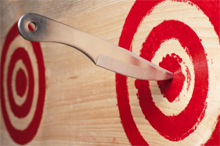 Many exhibitors hire magicians or entertainers to attract exhibit traffic, but every now and then a company comes up with an act that breaks out of the ordinary. A ceramic knife manufacturer took a knife throwing act to a new level – pitting their ceramic knives against the competition. The knife throwing act demonstrated that while some ceramic knives shattered easily, the company’s knives were truly shatter resistant and could survive even knife throwing.
Many exhibitors hire magicians or entertainers to attract exhibit traffic, but every now and then a company comes up with an act that breaks out of the ordinary. A ceramic knife manufacturer took a knife throwing act to a new level – pitting their ceramic knives against the competition. The knife throwing act demonstrated that while some ceramic knives shattered easily, the company’s knives were truly shatter resistant and could survive even knife throwing. - Extreme Demos.
If you have an extreme product, consider having an extreme demo. At one trade show, Taser offered to shock attendees, and hundreds took up the offer and ended up on the floor. - Great food.
If you are exhibiting at a non-food show, think about offering a crowd-pleasing, made-to-order food item. The trick is to avoid the commonly offered freshly baked cookies and coffee drinks. For example, at a tech show, Fios, Inc. of Portland offered smoothies – and had people lined up for hours. While attendees waited for their smoothie, the booth staff scanned their badges and introduced attendees to Fios e-discovery legal support services and software.
There are many ways to attract attention – prizes, demos, entertainers and free food are common – but when done in an unexpected way, it can make your booth the trade show exhibit that everyone talks about.
The Key to Tradeshow Exhibit Success: Location, Location, Location
When you’re planning for the upcoming year of trade shows, it’s important to remember that the location of your booth at trade shows can be key to getting the maximum amount of traffic.  Lots of traffic can equate to a higher number of qualified sales leads, which you need to justify the expense of attending these shows.
Lots of traffic can equate to a higher number of qualified sales leads, which you need to justify the expense of attending these shows.
The first step is to plan for the trade show early. When you book early, you’ll have more options to choose from for your booth location. If you wait until the last minute, you’ll be limited to choosing from whatever booth spots are not sold. The only plus of waiting: you might be able to find out in advance who your neighboring exhibitors will be. If a show doesn’t sell out, by booking later, the show organizers might offer that accompanying booth—if vacant—for free or for a greatly reduced price just to fill it.
If a particular show is a success for you, sign up and reserve your spot for the following year’s event while at the event or shortly thereafter, which might get you a better location and better deal too. Keep in mind that if you are a returning exhibitor, the event management’s sales folks want you back. Use this as a bargaining chip in your negotiations for next year’s booth rate and location.
So what are the prime locations when choosing your booth location? Let’s take a look at a few of the primo spots that exhibitors crave.
Close to the exit from the restrooms. You might balk at getting seated near the restroom at a restaurant, but tradeshows are an exception. Everyone eventually has to go to the bathroom and as they leave, they are often in strolling mode and more likely to stop.
Adjacent to food kiosks and/or Internet cafes. Be the first booth they see after they grab that cup of coffee, eat that bagel or check their email. Once their hunger is sated or their caffeine withdrawal has ebbed, they will be ready to give you their full, undivided attention.
Close to the entrance/exit of the exhibit hall. It’s guaranteed that everyone will have to walk by your booth multiple times a day. Be the first booth they see when they enter the hall, before they are worn out from hours of schlepping up and down the aisles.
End of aisles or on back walls. People often look to see how long aisles are and stop to get their bearings before they embark down an aisle. Seize this opportunity to grab their attention.
Best Lighting Solutions for Trade Shows
Proper lighting is an essential component of your tradeshow booth and can help increase traffic and create a favorable environment in which to pitch your company’s products. According to booth design expert, Bruce Baker, who’s published articles on booth lighting, a good lighting system that functions at peak performance will boost sales more than any other item you can purchase.
Your lighting requirements will vary depending on your specific promotional goals, display configuration, exhibit color and design, booth lighting fixtures, and space. To determine what type of lighting will best create effective, creative exhibit illumination, you must carefully consider the following questions:
- What area or product in your booth will need to be the focal point?
- What visual impact, impression, or message do you want to convey through lighting?
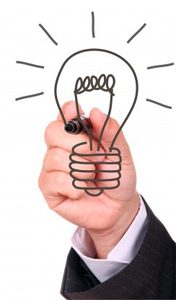 When you want to create a spotlight effect to highlight one particular area of interest in your exhibit, you might consider overhead truss lighting. If you’d rather create a more inviting, warm and welcoming atmosphere to make prospects feel more comfortable, you might select a soft lamp or ambient lighting.
When you want to create a spotlight effect to highlight one particular area of interest in your exhibit, you might consider overhead truss lighting. If you’d rather create a more inviting, warm and welcoming atmosphere to make prospects feel more comfortable, you might select a soft lamp or ambient lighting.
Special illumination techniques can be used to create a more dramatic atmosphere that can possibly draw more attendees to your booth by setting it apart from competing booths. Determining the mood you want to create—exciting and dynamic or warm and inviting—will go a long way towards helping you determine the most appropriate lighting.
Other questions to ask when weighing your lighting options are:
- What type of lighting is being supplied by the exhibition facility?
- How much power will be available in your booth?
- Would additional power be available, if your lighting needs require it?
- How are light fixtures attached to your display?
- How much can you spend on display lighting systems?
Once these questions are answered, you can go to your lighting supplier and find the best solutions for your particular needs. Good lighting can lead to increased booth traffic, additional sales leads, and possibly higher resulting sales, so choose wisely.
Trade Show “Power Graphics”
Graphics are a critical element of any trade show display. You could have the best promotion, best product and brilliant people in your booth but, if most attendees don’t notice your exhibit, it won’t matter.
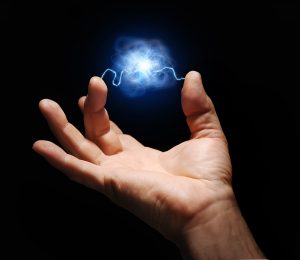
There are many philosophies about how to create effective trade show graphics that persuasively break through the clutter. One solution is “Power Graphics” – singular images that have the “power” to make your exhibit stand out from your competition, attract your target customers and almost instantaneously communicate your key message.
What makes graphics powerful? Graphics that are singular and focused have power. Images and words combined to communicate your message and brand personality without needing translation have power. Graphics without unnecessary elements in the design, displays and sales presentations so that your target customers can actually experience your message, your brand and your products are the most powerful.
The images and words that you use depend on your marketing message but here are a few general guidelines:
- Make sure your designers know everything that is important about your target customers – before they start work.
- Select a design team that knows how to design exhibits. This is a unique design task and many great advertising designers have little experience with or understanding of trade shows.
- If one image will communicate your message, don’t be afraid to let your designers build the exhibit around that one key image.
- Keep it simple and uncluttered. The details belong in your sales material, presentations and interactive displays.
- Make sure the key graphic can be easily seen from a distance. Avoid small or overly detailed images.
- Think in 3-dimensions. Dimensional graphics create visual interest.
- Incorporate words – in large, legible type. The most memorable images are often the combination of a few words and a graphic image.
- Use lighting to make the “Power Graphics” the focal point of the exhibit.
- Avoid commonplace and generic images, for example, photographs of happy customers, standard product photography and stock photography that looks like stock photography.
Effective use of “Power Graphics” can make a meaningful difference in your ability to get the most out of trade show participation.
Archives
- July 2021
- June 2021
- May 2021
- April 2021
- October 2018
- September 2018
- August 2018
- July 2018
- June 2018
- May 2018
- April 2018
- March 2018
- February 2018
- January 2018
- December 2017
- November 2017
- October 2017
- September 2017
- August 2017
- July 2017
- June 2017
- May 2017
- April 2017
- March 2017
- February 2017
- January 2017
- December 2016
- November 2016
- October 2016
- September 2016
- August 2016
- July 2016
- June 2016
- May 2016
- April 2016
- March 2016
